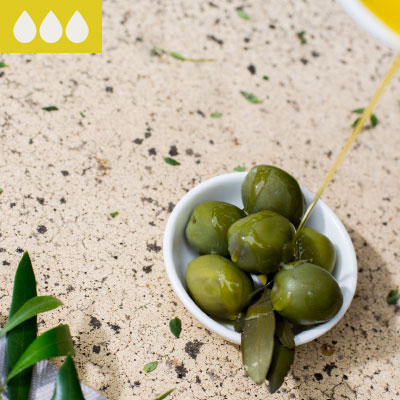Australians are an inventive bunch – we like to try our hand at just about anything, with the term “have a go” regularly spouted from sheering sheds to boardrooms all over the nation.
Perhaps that’s why the recent surge in Masterchef-style TV shows has inspired a national passion for culinary creation, turning our more inventive home-cooks into home-chefs who are “having a go” at curing, smoking, sous-vide poaching, bottling and baking.
But for those home-chefs who are partial to a platter, filled with local cheeses, homemade crackers and quince paste, making your own table olives is a really simple and satisfying process.
There are many ways of preserving olives – in Greece they fill pillowcases with olives and salt and hang them in the sun to dry, in Spain they use caustic soda to treat the olives, and for Kalamatas it’s all about the white wine vinegar!
Here are the most popular, and easiest, methods for making your own olives at home…
TRADITIONAL TABLE OLIVES
For we Aussies, the traditional and easy way of prepping your olives is quite simply with salt water… and for a nation surrounded by the stuff, it doesn’t get much more Australian than that!
Ingredients
Certified Australian Extra Virgin Olive Oil (EVOO)
Green or black olives
Water
Sea salt
Garlic
Oregano
Lemon juice
Method
Place olives on a clean cutting board and make two lateral cuts in the sides of each olive with a small serrated knife to allow the water and salt to penetrate the fruit, draw out the bitterness and preserve it.
Toss the olives immediately into a bucket of clean water with 1/2 cup of salt dissolved into every 10 cups of water. Ensure all olives are submerged under the liquid by placing a clean plate on top of the solution. Over the next 12 days for green olives and 10 days for black olives, drain the liquid away daily and replace with fresh salt water.
To test if the olives are ready for final salting, bite into one to ensure the bitterness is nearly gone.
Pour off the remaining liquid and measure and record the water volume. Measure the same quantity of fresh warm water into a pan and dissolve the salt, this time at the rate of 1 cup of salt to 10 cups of water.
Bring the salt water preserving mixture to the boil and allow to cool. Place olives in sterilized bottles or jars then pour the salt water brine over them until the fruit is completely submerged. Top up the bottles with up to one centimeter of certified Australian Extra Virgin Olive Oil (EVOO) to prevent any air from getting to the fruit and seal with lids. The bottled olives will store for at least 12 months in a cool cupboard.
When you are ready to eat your olives, pour out the strong preserving solution and fill the jar with clean, cool water. Leave in the refrigerator for 24 hours and taste.
If they’re too salty for your liking, refill the bottle with fresh water and return to the refrigerator for a further 24 hours. Once ready, add a good slosh of Australian EVOO, crushed garlic, oregano and lemon juice for the perfect platter accompaniment!
KALAMATA OLIVES
The Kalamata style of preparing olives originated in Greece and is very popular in Australia. You can use Kalamata, Volos or Hojiblanca olives to prepare Kalamatas but for consistency only use one variety per batch.
Ingredients
Certified Australian Extra Virgin Olive Oil (EVOO)
Kalamata, Volos or Hojiblanca olives
Water
Sea salt
Method
Remove defective fruit, leaves and stalks and soak for one day to get rid of orchard dust and contaminants.
Place fresh black ripe olives in containers with 10% brine (100 grams of salt to 1 litre of water).
Fill containers to the top, and keep olives under the surface for approximately 6 weeks, or until there is no longer a bitter taste.
Once ready, remove from containers and make a small incision in the side of the olives before soak in wine vinegar overnight.
After soaking overnight, rinse the olives in a fresh 10% brine and vinegar mixture, using 3 parts brine and one part white wine vinegar.
Add certified Australian Extra Virgin Olive Oil (EVOO) to serve.
To make sure your Australian EVOO is certified, check the bottle for the triangle certification symbol.
